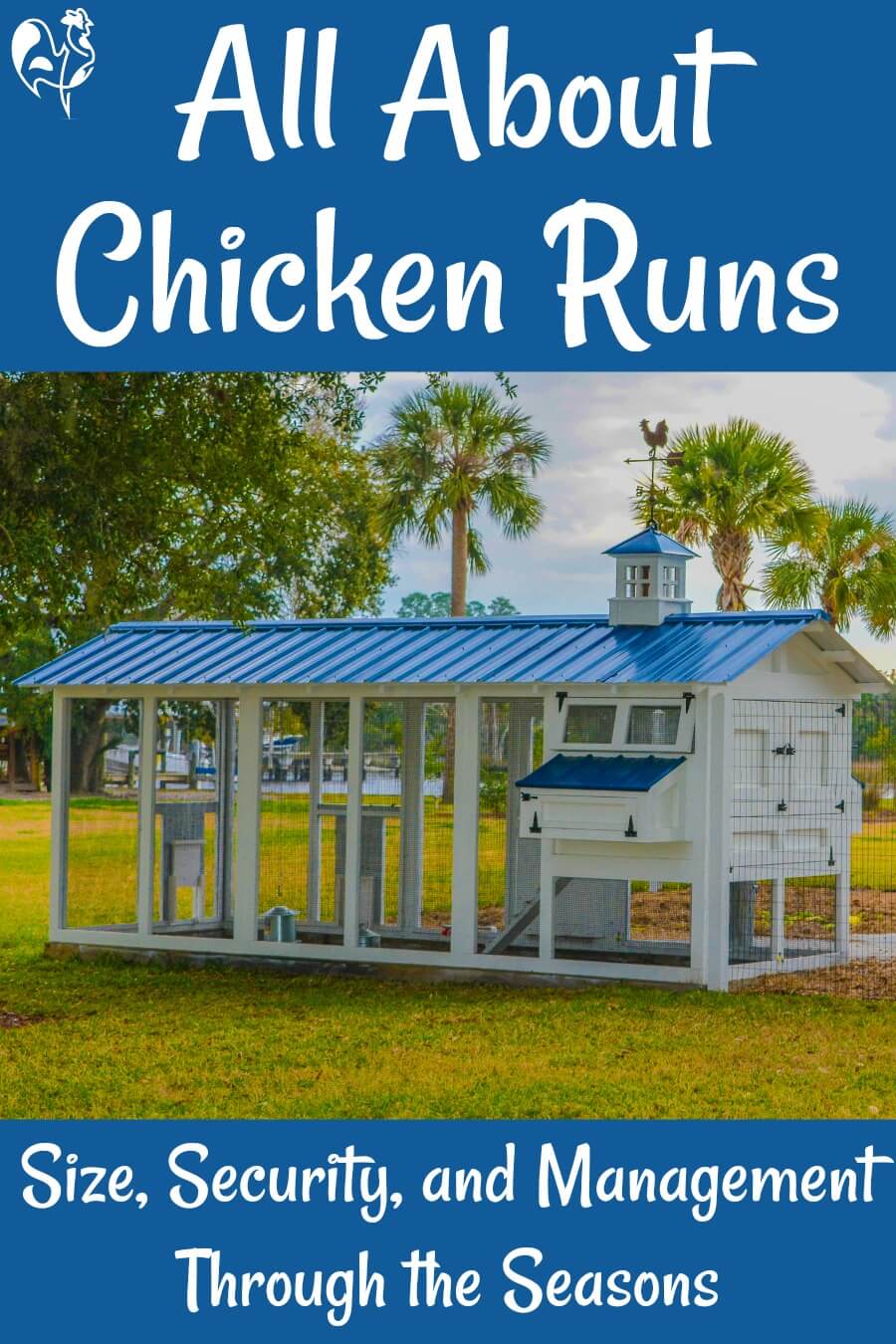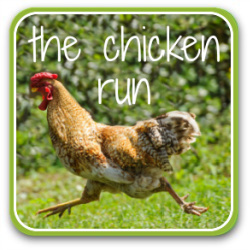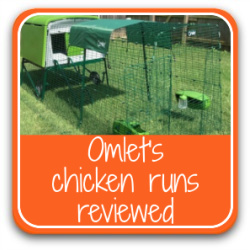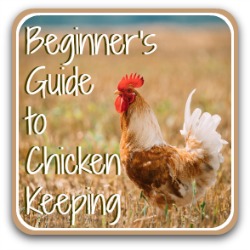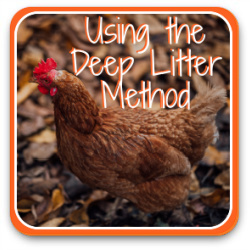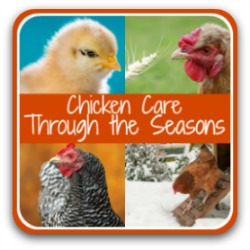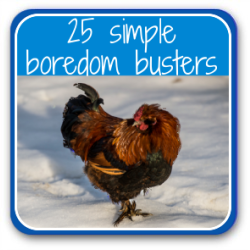- Home
- Chicken runs
- Basics
Chicken runs: how to make sure they suit your flock's needs.
So you've got your coop and you've checked it has everything a chicken could possibly need. But what about the run?
What is a chicken run and why have one?
Ideally, most of us would like to free range our flock: that is, allow them to range freely on our land. But our individual situations mean it's not always possible.
We don't all have time to chicken-sit our hens to make sure they come to no harm as they free range.
Predators, traffic, neighbours who don't want them in their gardens - and their ability to destroy our own plants - may all mean our chickens have to be enclosed somehow.
But happy chickens love to be outside. Their natural behaviour is rootling round amongst grass or leaves for bugs (and in my flock's case, the occasional frog!), or lying with wings outstretched to the sun, or digging a dust bath under their favourite tree.
Which is where runs come in. The run is simply an enclosed space where your flock can safely roam. And of course, the more outdoor space you can give them, the happier they'll be.
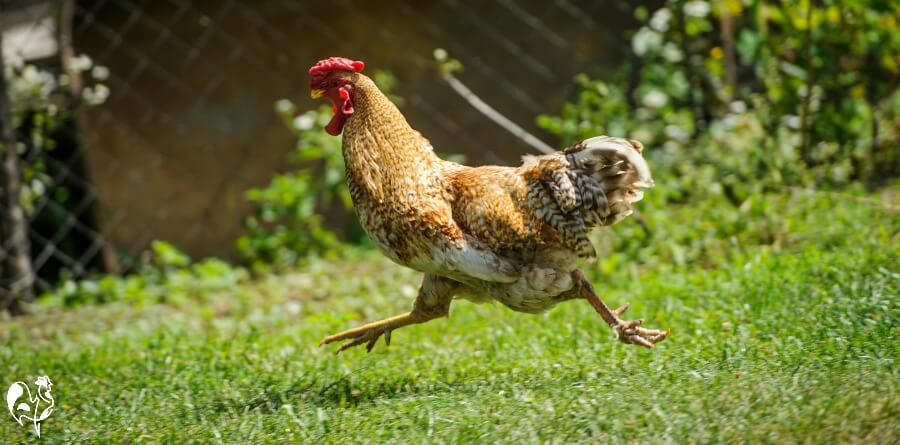 The more space your chickens have, the happier they will be!
The more space your chickens have, the happier they will be!How big should chicken runs be?
You'll see different figures in various places for this, but the correct absolute minimum space for a chicken confined in a run is one square metre (about 11 square feet) per bird. For small breeds like the Silkie you can allow slightly less; for larger breeds you should allow more.
That is, though, a bare minimum. The more space the flock has, the better, particularly if your coop is a small one. Chickens who don't have enough space are prone to become bored and / or aggressive, so behaviour you really don't want such as bullying, feather-pecking and egg-eating become far more likely.
Allowing the birds to have enough space to indulge in their instinctive behaviours lessens the likelihood of that, and of disease becoming a problem.
Don't commercially raised hens have much less space?
Yes. Hens in battery cages in the US, for example, have a space about the size of an A4 piece of paper.
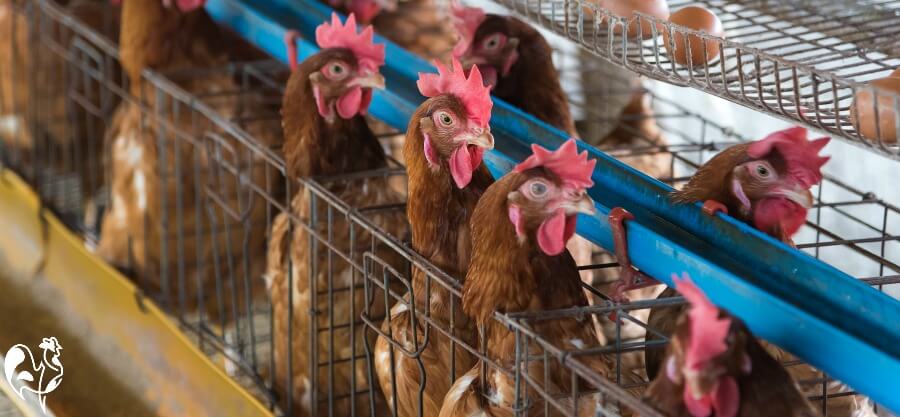 Caged hens in some parts of the world have far too little room.
Caged hens in some parts of the world have far too little room.Those cages are actually illegal in the European Union, where hens must have enough space to nest, perch and scratch in bedding.
But space allowed in commercial egg production is not what any of us, hopefully, would want for our chickens. Hens there survive but, sadly, suffer.
Make as much room for your hens as you can.
What if you only have a small garden?
Omlet have a range of chicken runs which are amongst the best available. Some connect with the Eglu coops, others can be used with any coop, all of them are as close to predator-proof as it's possible to get.
All of them are perfect for backyards and gardens, urban and rural.
Take a look at my reviews, here.
They also have portable chicken fencing, which is not predator proof but very useful for keeping your flock in, or sectioning off a part of your run.
It's still possible to keep chickens in your small garden or back yard. Just make sure you don't overdo the numbers. It's always tempting to buy more chickens, but keep your flock size appropriate to the space you have.
Bear in mind, too, that hens are sociable creatures. They don't like being on their own. Three hens in a small garden is an ideal number. They have company and, should one unexpectedly die, the others still have each other until you can introduce another to the flock.
So even if you have a bit more space, keep your chickens happy by leaving the number at three and allowing them more space each, rather than increasing the numbers.
A good way of making use of space in a smaller area is having a raised coop like this small one of mine, which has a run area underneath as well as to the side.
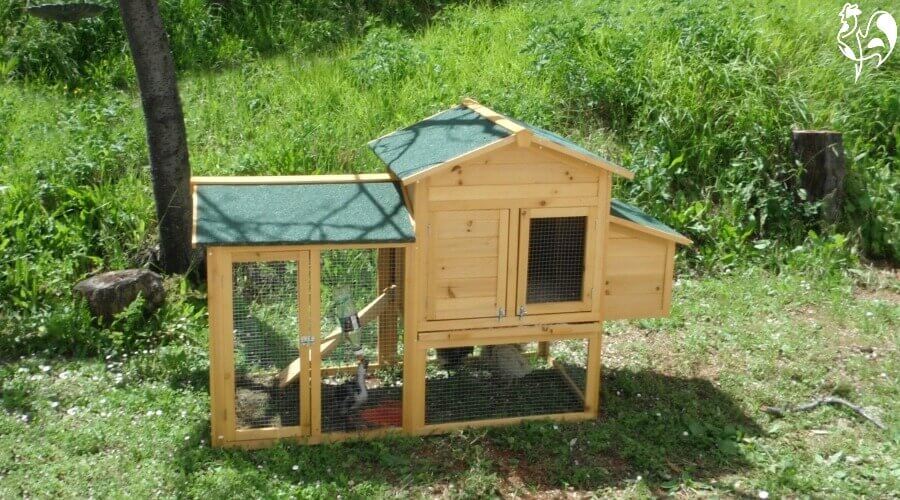 My small coop - this would hold no more than 2 hens.
My small coop - this would hold no more than 2 hens.This coop was my first. It was advertised as holding 6 hens but in reality that's far too many. 3 would be an absolute maximum. I used it within a larger run because I don't see it as being big enough for even 2 hens to be happy.
These days, I still use it within my large run, but only for individual chickens who need to be separated from the flock because of bullying or illness.
For inspiration about creating a chicken friendly back yard, take a look at my book review.
How secure does it need to be?
The short answer is "very".
Foxes, coyotes, dogs, raccoons, rats, pine martens or any other member of the weasel family, birds of prey -- all predators have different ways of getting into your run and therefore your coop. And once that happens, your chickens are instantly someone else's dinner.
Here's what chicken runs need, to be as secure as we can make them:
- Fencing that's at least 6 feet high. Foxes can climb. Chickens can fly.
- Fencing that's buried at least 18" deep. Predators like to dig, rats like to burrow.
- An 'L' shaped skirt on fencing to stop predators getting anywhere near the bottom of the fence.
- Strong, chain-link fencing. Chicken wire is not strong enough.
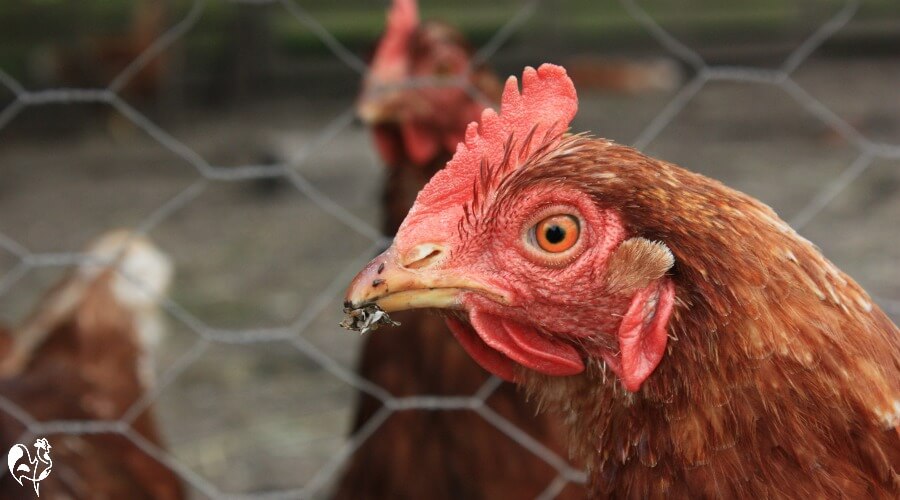 This kind of chicken wire will not keep predators out - it's not strong enough.
This kind of chicken wire will not keep predators out - it's not strong enough.- As small a fence gap as possible. Rats and the weasel family will squeeze through the tiniest of holes.
- No overhanging trees. As I learned to my cost, pine martens like to drop into a run from a great height.
- Cover over the top of the run - make it hard for those birds of prey to swoop.
- Padlocks on doors or gates. Raccoons have surprisingly dextrous claws which can open latches in an instant.
Here's a more detailed article reviewing the different types of fencing for a chicken run.
What ground is best in chicken runs?
(Links in this section are "affiliate links", which means that if you click and buy something, I earn a small commission at no extra cost to you).
Whichever type of ground your run has, it should be in as well-drained an area as possible, with some protection from the sun. Trees are an excellent choice. They also provide shelter from the wind and roots can make a great place for your flock to dig out a dust-bath.
Grass in the chicken run.
The obvious answer might seem to be grass, and if you have a big enough area, grass is ideal. Chickens can spend their day happily scratching around for bugs, and creating their own dustbaths in whatever shade they can find.
But even a small number of chickens scratching around, as all chickens love to do, can very quickly turn what might seem like a large area into a mudbath in winter and a dustbowl in summer.
One possible answer is a "chicken tractor" which is basically a movable run. Something like this...
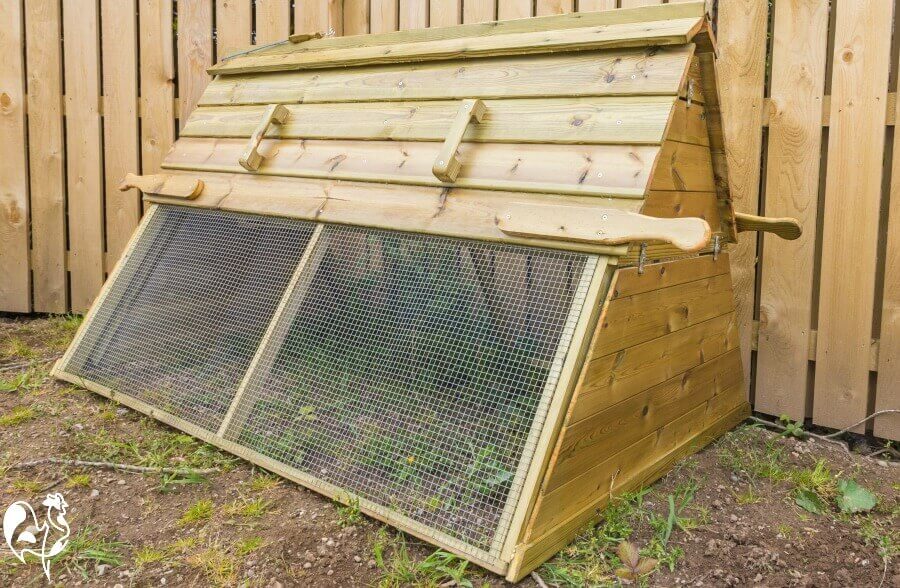
The chickens are moved temporarily to a piece of land enclosed by the tractor. When they've finished there, they're simply moved to another part of the run.
It gives grass time to re-grow, and can be very useful when putting chickens to work turning over a vegetable patch ready for planting. They'll remove all the weeds and fertilise the patch as they go!
Omlet's Eglu Cube can be used as a tractor – that's how I use mine. Read a review of it and how it turns into a movable coop.
Using pine pellets in chicken runs.
If you don't have a large area to cover, these pine pellets are a possibility. Originally used for horses, they're now available in smaller quantities and are an ideal way of soaking up mud.
The pellets are made of shredded pine which soak up the moisture, expand and then fall apart, leaving your run covered in a kind of fluffy sawdust rather than mud.
It's not cheap, but it's very effective – and safe.
Other alternatives to grass in the run.
Wood chippings and other mulches are generally expensive, but a possible alternative if you have a small-ish run. As an added bonus, they can be composted when the run is cleaned out.
The downside? Dusty in the heat, they tend to go to mush in the rain, so unless you can cover at least part of your run they're not an ideal solution. And never use cedar chippings - the oils and fumes can be toxic to chickens.
For a very small run of two or three chickens, hemp bedding is an excellent choice. It's expensive but very absorbent, sustainable, natural and does not contain mites or lice, as some wood chippings have been found to do.
Coarse sand, also known as builder's sand, is another possible solution for a small to medium-sized run. It drains easily, has the advantage of being a permanent dust-bath and the flock can still scratch through it to the bugs and worms in the soil beneath.
You'll need to use a thick layer though - anything under about 6" will simply be absorbed into the soil beneath. And if your run is exposed to the sun in the summer, be careful about heat on your chickens' feet.
Chopped straw: if you have a small, covered back yard run, you can use chopped straw. But unless it's covered, it's not ideal in winter. Damp weather means it doesn't dry out well, and damp straw creates spores, which can cause problems for the respiratory system, and harbours mites.
If you're going to use it, keep it dry and clear out any that remains wet.
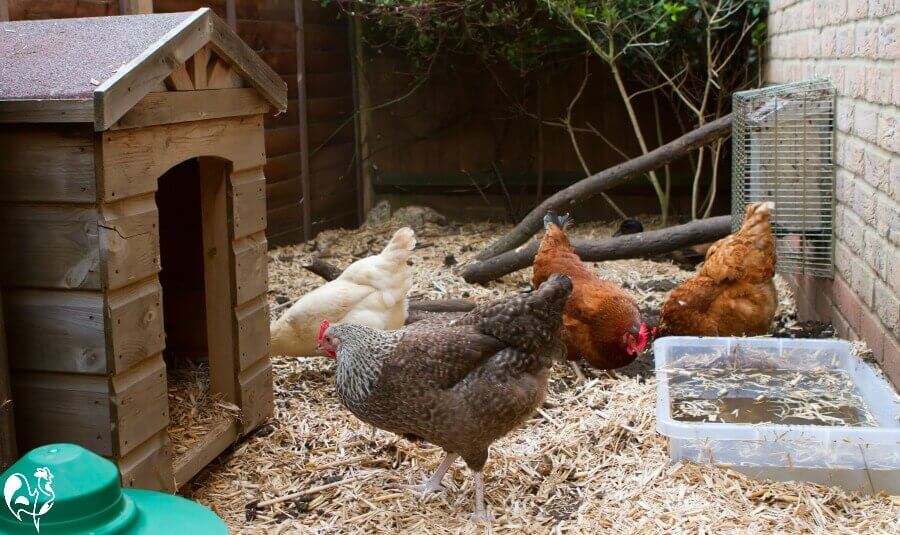 This small backyard run uses chopped straw which is kept dry by a covered roof.
This small backyard run uses chopped straw which is kept dry by a covered roof.See this article for more detailed information about the best flooring to use in the chicken run.
Keeping chicken runs clean.
It should go without saying that chickens kept confined need to have their surroundings kept clean. Not doing so will attract vermin and disease. Bird flu is known to have developed from dirty surroundings.
For large, grassy areas, or flocks using the tractor method, this isn't so much of a problem as droppings never stack up.
And sand in the run is easily kept clean by scooping droppings out with something like a kitty litter scoop every day. Using a metal scoop avoids issues of vermin eating plastic.
Other coverings in smaller runs need to be kept free from droppings as much as possible. Pick up the worst every day, and completely clear the covering every month.
If the run has a hard base like concrete, use a power washer and a strong disinfectant. For soil, try using a ground sanitiser.
Managing chicken runs in winter.
Here are some possible solutions to a soaking run.
- If the area is particularly prone to retaining water, place the run on a slope - or dig one out. If that's not possible, add a simple pipe drainage system to carry the water away.
- Use paving slabs as a base, with one of the coverings above on top. This has the advantage of preventing tunnelling rodents. The slabs will need cleaning off regularly but are easily sluiced down.
- The best material to lay on top of an already soaked run is either sand, or chopped straw. Both will absorb at least some of the wet, but be careful with straw to remove any that remains wet for more than a day.
- If all else fails, create a walkway with some pallets. It creates a respite from the damp - the birds can hop off to have a forage and back on to dry off.
- Never leave your chickens with nothing but mud to stand in. It's asking for trouble.
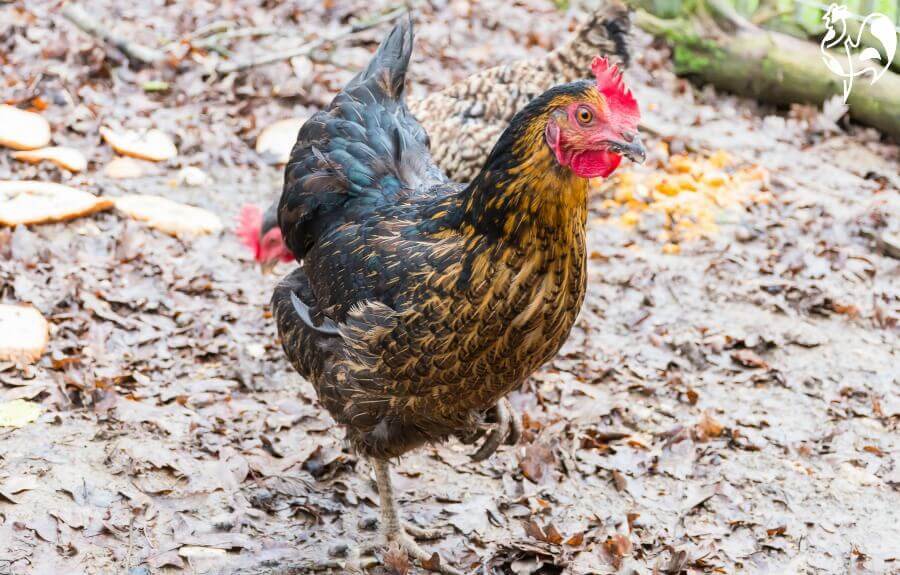 Don't allow your run to get as muddy as this - it will create health problems for your chickens.
Don't allow your run to get as muddy as this - it will create health problems for your chickens.Keeping your run cool in the summer.
It's much easier for chickens to keep warm than it is to keep cool. Heat exhaustion can be a killer. So there needs to be provision in your run for the flock to keep cool during the summer months.
- Placing the run under a large tree is a great solution if it's possible. If it's not an option right now, plant some fruit trees which have the dual benefit of giving shade once they've grown, and providing the flock's very own fruit supply once they're old enough.
- Trees are an excellent choice in many ways. They also provide shelter from the wind and roots can make a great place for your flock to dig out a dust-bath.
- Hanging a large tarpaulin across a corner of the coop provides some much-needed shade underneath.
- Climbing plants on the fencing can provide shade, although mine never get far before the chickens eat them. Plant on the outside of the run, otherwise the roots will be dug up before they have a chance to become established.
- Make sure you provide plenty of water, frozen treats and other ways of keeping cool, too.
- Give them some dustbathing spaces. As well as helping ward off mites and keeping feathers in good order, it's another way for chickens to cool off. I offer a range from plantpots to old car tyres to children's paddling pools!
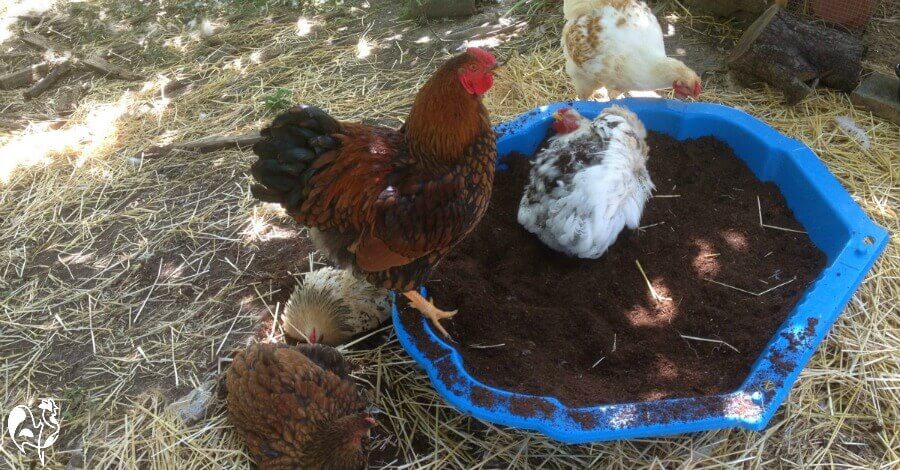 This is my hens' favourite dustbath - a child's paddling pool placed in the shade of a large fig tree in their run.
This is my hens' favourite dustbath - a child's paddling pool placed in the shade of a large fig tree in their run.Preventing boredom in the run.
Chickens who can't free range, especially if they're in quite a small run, can easily become bored. And boredom will lead to all manner of problem behaviours.
Here are a few tips to help.
- Foraging is an important behaviour for chickens. If they're in a large run they'll take care of this themselves - it's an instinctive behaviour. If in a small run, scatter some treats in the bedding for them. Mealworms are always welcome, as are sunflower seeds and bits of fallen fruit.
- Grow some sprouted seeds so that, if all the grass goes or the flock is in a run without any grass at all, they have some greens to peck at. This article shows you how.
- Hang a lettuce to allow them to work for their treats! I named this game "kill the swinging lettuce" and they love it! Be careful in summertime though - don't make them work too hard or they'll overheat. I have a short video showing how it's done, here.
- There are any number of gadgets available to keep chickens amused these days. A swing, a treat ball, even a xylophone.
- And remember: even if you can't afford anything as fancy as this stylish coop and run, what your chickens really love best is a day at the spa, in their very own dustbath.

Where would you like to go now?
- Home
- Chicken runs
- Basics
